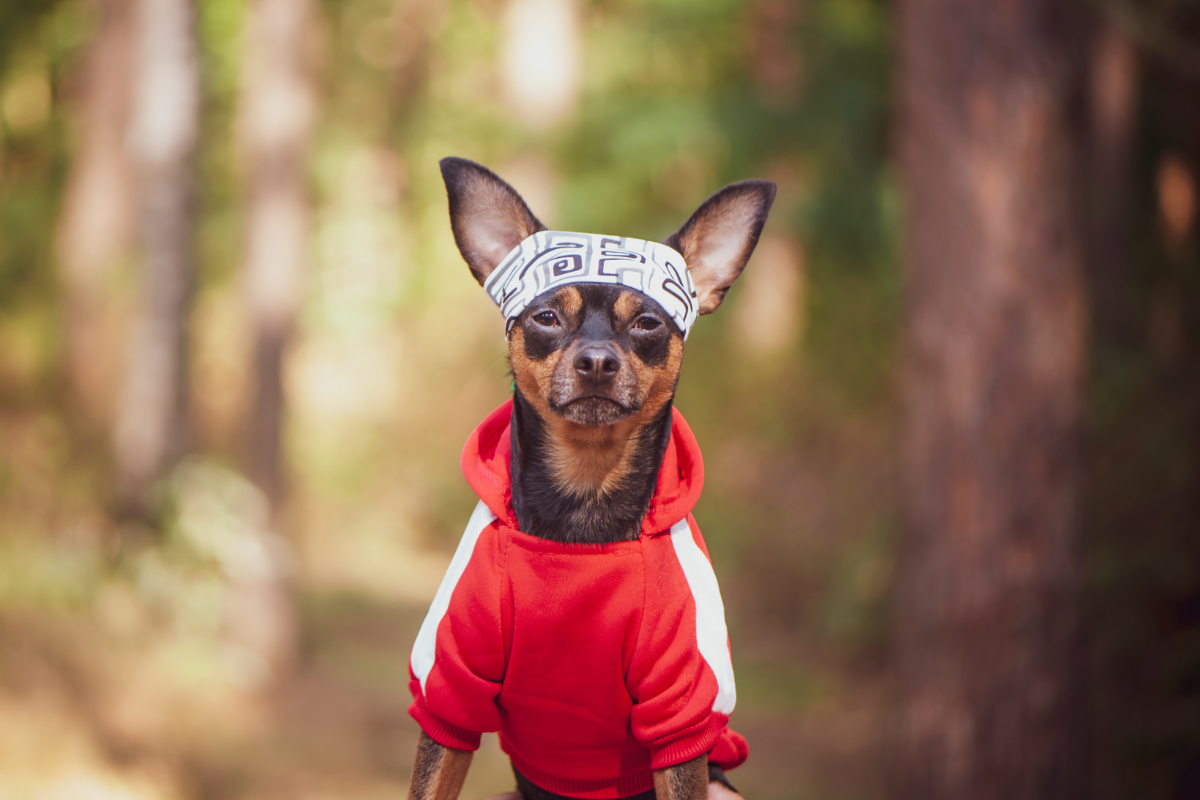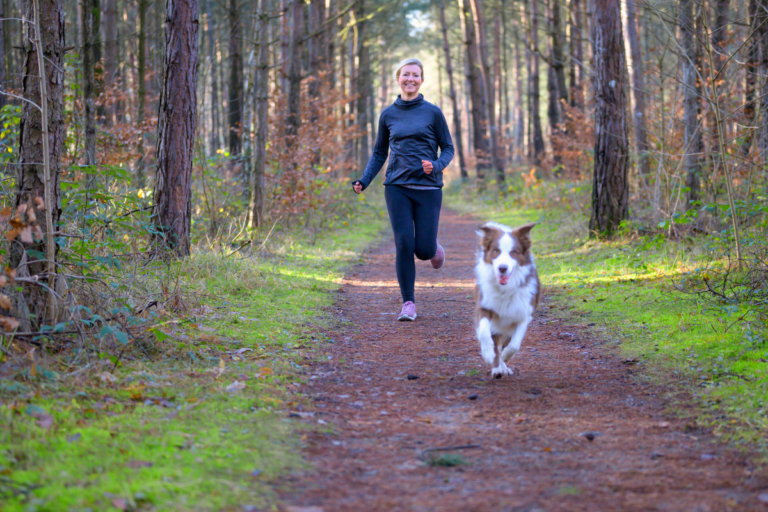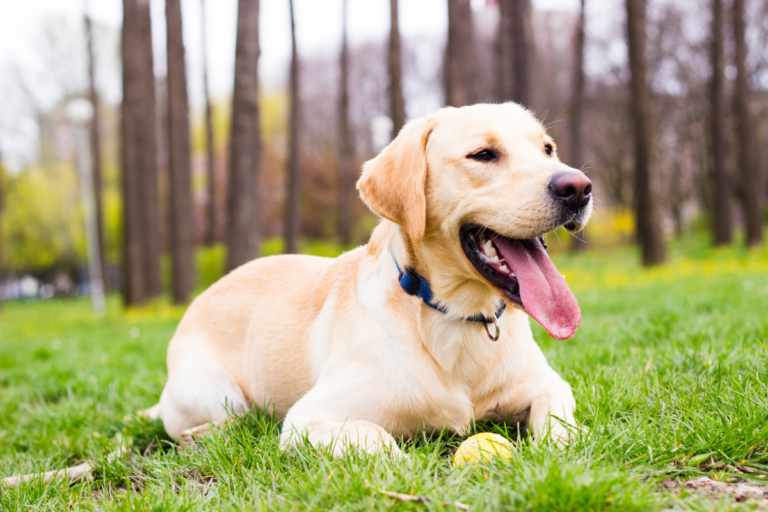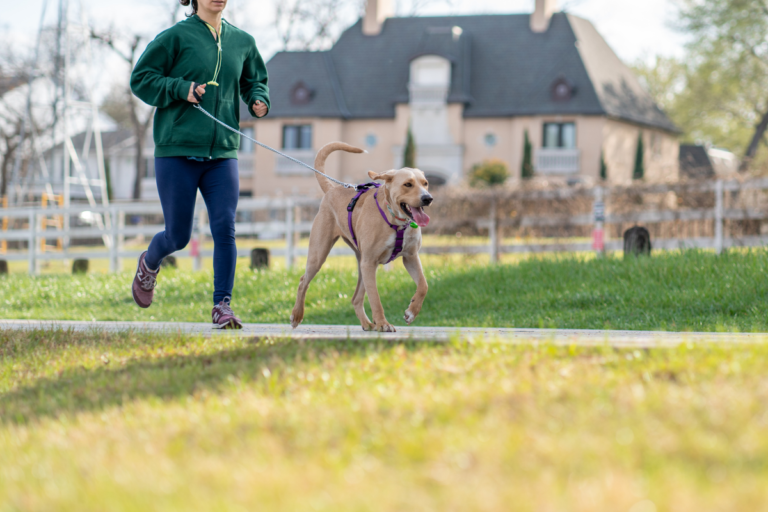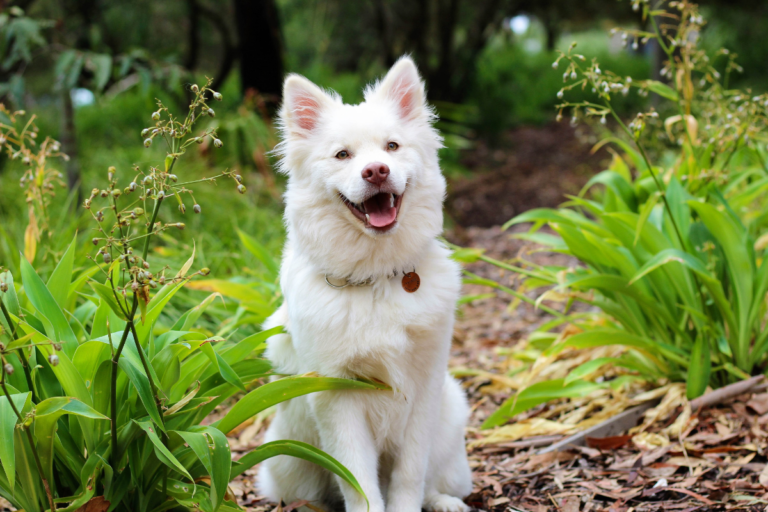Bark and Burn: Effective Dogs Workout Plans for a Pawsitively Healthy Dog
The Importance of Dog Exercise
Benefits of Exercise for Dogs
Keeping our doggos fit isn’t just about burning off some kibble. It’s like giving them a daily dose of happiness and health rolled into one. Let’s chew the facts:
- Strong Bones: Daily playtime builds up those bones and muscles. Who doesn’t want their dog strutting around with the pep of a puppy? (Texas A&M Veterinary Medicine & Biomedical Sciences)
- Happy Heart and Lungs: Good workout sessions pump up that heart and kickstart those lung engines! It gets your dog’s insides working like a charm.
- Shiny Fur and Buff Bods: Regular exercise helps sport sleek fur and sturdy muscles. A fit dog usually looks happier and healthier.
- Staying Chill: Exercise can mellow them out, meaning less pacing and more cuddling on the couch.
Here’s a cheat sheet of why it’s pawsome:
| Benefit | What It Does |
|---|---|
| Strong Bones | Buffs up bones, dodges those injury woes |
| Heart and Lungs | Keeps the ticker and airways in top condition |
| Sleek Looks | Boosts that fur and muscle tone |
| Calm Vibes | Chills them out, so they’re less prone to freak out |
Risks of Skipping Exercise
Not letting them chase their daily tail? Bad idea. Here’s what could go down if your furball becomes a couch potato:
- Weak Muscles: Without enough action, muscles can get floppy and sad, increasing injury risk. (Texas A&M Veterinary Medicine & Biomedical Sciences)
- Accidents Waiting to Happen: Sluggish muscles make injurious tumbles way more likely.
- Brain Fog: Dogs need mind games as much as legwork. Laziness can lead to a mushy mind.
- Mood Swings: Being cooped up might result in barking sprees, chewing sessions, or unexpected Houdini acts. (Madison Animal Care)
- Chubby Buddies: Slight problem: over half of U.S. dogs are packing extra pounds, which isn’t good for their health. Say hello to diabetes, arthritis, and more. (ASPCA)
Here’s a quick risk rundown:
| Risk | What It Means |
|---|---|
| Weak Muscles | Muscles go soft, inviting injury |
| Injury Alert | Poor muscle condition raises the chance of injury |
| Brain Burps | Without action, those neurons might snooze |
| Moody Blues | Leads to chaotic behaviors like barking, chewing, or jailbreaks |
| Chunky Cherubs | Diabetes, arthritis, and heart issues knocking at the door—yikes! |
Need more tips to keep your pooch in peak condition? Fetch some ideas from our fit paw and k9 fitness articles. Don’t forget, their age and current health play a role in planning their exercise fun.
Making Exercise Fun for Your Dog
Exercise keeps every pooch happy and healthy. But let’s not forget, each dog is as special as a snowflake, and what works for a Dalmatian might not cut it for a Dachshund. We’re here to help you craft the perfect playbook for your pup, based on their breed and size, all wrapped up in a bow of fun and variety.
Considering Breed and Size
Every dog has their quirks, and their wagging tails need different kinds of workouts. Here’s a rundown on keeping tails wagging from Chihuahuas to Great Danes.
Small Breeds
Little guys like Pugs and Chihuahuas don’t need to hit the gym like their bigger buddies. They burn plenty of calories with a few quick sprints in the living room. Beware of overdoing it, though – those tiny paws need extra care.
| Breed | Average Daily Exercise (Minutes) |
|---|---|
| Pug | 20 – 30 |
| Chihuahua | 30 – 40 |
| Pomeranian | 30 – 45 |
Source: ASPCA
Tap here to discover more on keeping your pocket-sized pal spry on our page fit paw.
Medium Breeds
Medium-sized pooches, like Labradors, recharge their batteries with a bit more action. Think of them as the marathoners of the dog world – a couple of laps around the park ought to do it.
| Breed | Average Daily Exercise (Minutes) |
|---|---|
| Labrador | 60 – 90 |
| Border Collie | 90 – 120 |
| Beagle | 60 – 90 |
Source: AKC
Find more juicy tips on keeping your Lab happy in our fit labrador article.
Large Breeds
Big breeds, like Great Danes, are gentle giants that prefer a stroll to a sprint. Their exercise is a lower-key affair, protecting their joints while still keeping those tails wagging.
| Breed | Average Daily Exercise (Minutes) |
|---|---|
| Great Dane | 30 – 60 |
| Mastiff | 30 – 60 |
| Saint Bernard | 30 – 45 |
Source: Madison Animal Care
Pups and teen-age dogs have their own groove. They’re all about short bursts of energy that don’t drag on too long, unlike their adult counterparts who can go the distance for hours (AKC).
Fun and Engaging Activities
Bored dogs can be a handful, so mix it up with different games in their routine. Try these activities to keep your doggo on their toes:
- On-Leash Running or Cycling: High-energy dogs will love running alongside a bike. Just make sure the road’s soft underfoot.
- Obstacle Courses: Set up some fun challenges in your backyard or a local park. Tunnels, jumps, and poles can test your pup’s agility.
- Soccer-Style Balls: Kick around a big dog-friendly ball for a chasing frenzy that’ll rival the best soccer matches.
- Flying Discs: Perfect for fetch lovers. It keeps their mind and body sharp as a tack.
Discover even more paw-some exercises on our k9 fitness hub.
Customizing your dog’s workout routine is the secret to a healthy, forever-young pup. Dive into more tips and tricks with our articles on fitness with dog and canine fitness. Your dog will thank you with wagging tails and excited yips!
Signs Your Dog Needs More Exercise
Keeping our pups on their paws is crucial for their health and happiness, kinda like keeping our kids busy. If your four-legged buddy starts acting a bit off, they might simply need more playtime. Nobody said dogs could talk—but they sure have their ways of showing it!
Weight and Behavioral Indicators
Alright, let’s talk doggie waistlines. When our pooches turn chubby and start to look like a sausage rather than a svelte furry friend, it’s time to rethink their workout routine (PetMD). Those extra pounds can lead to big problems: think diabetes, heart issues, and stuff we’re all definitely trying to dodge (Madison Animal Care). Here’s a quick cheat sheet for when your dog is hinting at needing more zoomie time:
| Indicator | What’s Up with Fido? |
|---|---|
| Weight Gain | Hello, chunky monkey—extra fluff and puff |
| Destructive Behavior | Unplanned home renovations (that’s gnawing on stuff) |
| Excessive Barking | Noises galore, all because they’re bottling up too much pep |
| Restlessness | Pacing around like it’s audition time for a doggy cop show |
When our dogs start behaving like furry little wrecking balls, it’s their not-so-subtle way of saying they need to burn off extra energy. Destruction isn’t on their résumé, but walks sure should be.
Physical and Mental Stimulation
Getting some run-time is essential, but a bit of mind-bending fun can work wonders too. If your pooch is giving you the cold shoulder or seems to be stuck in a low-energy funk, it could be their way of screaming, “I need more play!” (Beaverton Veterinary).
Signs they’re a bit bummed out and need a lively routine include:
- Getting grumpy
- Playing hard to get with pals and peeps
- Acting like a puppy in a big dog world (barking, bouncing)
Let’s keep our furballs thrilled to bits by mixing up their workouts. From tug-of-war to mind-puzzling games, there’s a whole world of fun out there waiting for them.
For more paws and workout hacks, leash yourself to our tips on fitness with dog and dive into the mentals of canine fitness. Curious about what makes Labradors fit and fab? Sniff out the details on fit labrador for extra paw-terest.
Effective Dog Workout Strategies
Giving our dogs a good workout isn’t just about tire them out – it’s about keeping them healthy and peppy! When we’re crafting workout plans for our pups, we mix things up with indoor and outdoor fun.
Consistent Conditioning
Keeping it regular is the game here. Consistent workouts help our dogs stay fit, beef up muscles, keep their hearts ticking smoothly, and – bonus – cut down on those pesky behavior problems. The folks over at Texas A&M Veterinary Medicine & Biomedical Sciences have got it right: dogs dig activities like strolling, running, playing fetch, agility courses, canicross, and even biking along with us.
To keep workouts fun and interesting, we switch up the activities:
- Daily Walks: Shoot for a solid 30 to 60 minutes daily, adjusting for our dog’s breed and energy bursts.
- Running or Jogging: High-energy pups love on-leash sprints to get their zoomies out.
- Agility Training: Setting up simple obstacle courses kicks up their agility skills.
- Play Sessions: Togging it out with toys like flying discs keeps their brains sharp.
| Activity | Duration | Frequency |
|---|---|---|
| Walk | 30-60 minutes | Daily |
| Running/Jogging | 20-30 minutes | 3 times a week |
| Agility Training | 15-20 minutes | 2 times a week |
| Play Sessions | 10-15 minutes | Daily |
Indoor and Outdoor Exercise Options
Rain or shine, we’ve got options. Mixing between indoor adventures and outdoor outings makes sure our dogs stay on their toes, no matter what.
Outdoor Exercises
The outside world is a playground for our pups, filled with all sorts of smells and sights to sniff out. The ASPCA says variety is the spice of life with outdoor stuff, like:
- Hiking: A fab workout for both of us, trekking around gives both our minds and legs a workover.
- Swimming: For dogs with joint problems, paddling around offers a chill full-body burn.
- Fetch: A safe yard or park is great for a high-energy game of fetch with our furry pals.
Indoor Exercises
When the weather’s not playing nice or when indoor fun’s preferred, there are plenty of activities to keep our pals movin’ and groovin’. The AKC highlights indoor play:
- Tug-of-War: A playful tug session strengthens their muscles and determination.
- Hide and Seek: Gets their brains and noses working, encouraging sniffing skills.
- Indoor Agility: Household stuff like chairs can become mini agility courses for fun.
For more indoor day tips, check our write-up on fitness with dog.
Mixing up these exercise plans ensures our fur ball friends stay healthy, mentally sharp, and as happy as a dog with a bone! For breed-specific workout advice, hop over to our section on Exercise Guidelines by Breeds.
Exercise Guidelines by Breeds
Getting a grip on how much exercise our four-legged buddies need can really boost their happiness and health. Let’s check out the energy requirements for different dog breeds and make sense of how to tweak them according to age and health conditions.
Activity Levels by Breed
Different pups have their own special exercise playbook. Here’s a quick glance at some popular breeds and their exercise habits.
| Breed | Daily Exercise Needs | Activities |
|---|---|---|
| Labrador Retrievers | 1 – 1.5 hours | Swimming, hiking, agility courses, running (Orvis) |
| German Shepherd Dogs | Minimum 1 hour | Brisk walks, fetch, Frisbee, agility, running, swimming (Orvis) |
| Rottweilers | Varies | Running, fetch, hiking, tricks training, agility (Orvis) |
| Bernese Mountain Dogs | At least 1 hour | Walking, jogging, hide-and-seek, agility (Orvis) |
| Bulldogs | Regular walks, short play | Walking, short play (Orvis) |
Every breed runs on its own clock when it comes to exercise. For instance, Labradors, which can easily pack on pounds, need regular activities to keep fit. Our fit labrador guide dishes out more tips for healthy Labs.
German Shepherds, known for their serious work attitude, need lots of physical and mental challenges. Activities like agility training and long treks fit the bill well.
Rottweilers need both body and mind engagement. Getting them into tricks training or agility runs is a real winner. Swing by our canine fitness section for more inspiration.
Though huge, Bernese Mountain Dogs must stay active and entertained to keep the blues away. Fun with jogging and playful games suits them.
Bulldogs, on the flip side, are better off with short bursts of play and walks to keep their waistline in check. Our fit paw article talks more about keeping Bulldogs peppy.
Adjusting for Age and Health
Age and health throw a curveball in a dog’s exercise plan. Puppies often run on batteries and need more playtime to grow strong. But, overdoing it can risk injuries.
Older dogs still need their dose of exercise, just with less intensity. Easy walks and brief playtimes can maintain their vigor without stressing them out. Keep an eye out for signs of discomfort.
With health concerns, doggie workouts should be tailored to their needs. A vet can advise on safe activities and suitable exercise lengths. For pups recovering or battling chronic issues, splash time can be awesome.
Tweaking exercise based on age and health keeps our pets moving and grooving without undue stress. For more customized tips, hop over to our fitness with dog and k9 fitness guides.
By catching onto what each breed needs pedal-wise and tuning it to age and health, we can whip up workout plans that get tails wagging. For inventive exercise ideas, browse through our crossfit dogs article—there’s loads more to explore!
Exercising Safely with Your Dog
Keeping our furry pals active is super important, but let’s not forget to play it safe. Spotting signs of overdoing it and knowing how to manage heat and health stuff can keep our dogs in tip-top shape.
Signs of Over-Exercising
Pushing our pups too hard can mess with their mojo, leading to things like stubbornness, limping, and even a bad case of the blahs. Keep an eye out for these telltale signs and tweak their workout when needed.
| Sign | Description |
|---|---|
| All-Pant, No Play | Breathing like they’re running a marathon, even after a break. |
| Pooped Out | Acting like a couch potato, no more fetch today, thank you. |
| Total Drag | No oomph, hitting the deck more than usual. |
| Limp-A-Long | Walking funny or moving like they’re in slow-mo. |
These hints could also mean there’s something bigger going on, like heart problems or a collapsing trachea, especially for our little buddies (Goodheart.vet). Getting clued up on what else might be going on can help us figure out if they’re overdoing it.
Managing Heat and Health Woes
When it gets hotter than a jalapeño, our dog’s internal thermostat can go haywire. We should think twice about taking them out if it’s over 85-90 degrees. Opt for cooler times to romp around, either early morning or late evening (Oakland Veterinary Referral Services). Those summer scorchers put extra pressure on their hearts and lungs, so let’s keep the pace chilled to prevent overheating.
If you’re dealing with young pups or dogs with heart or lung issues, tone down the exercise to give them a fair chance to grow and keep those conditions in check (Goodheart.vet).
| Temperature (°F) | Safe Exercise Duration |
|---|---|
| Below 75 | Do your thing! |
| 75-85 | Keep it short and sweet. |
| Above 85 | Stick to dawn or dusk. |
| Above 90 | Netflix and chill instead! |
Watch out for signs that our dogs are hitting the wall, like extra heavy breathing or pure exhaustion. Less might be more for our arthritic pals or tiny tots on those hotter days to dodge any nasty surprises (Goodheart.vet). By customizing exercise based on our dog’s needs, we’re setting them up for a long, waggy life.
If you’re hungry for more tips on keeping your canine buddy in check, peek at our articles on canine fitness, fit paw, and fitness with dog.
